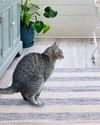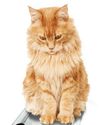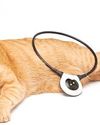
Before the Show
1. Recruit a great team of experienced show helpers, if possible. This is not always the case, and I addressed that issue with my recent Cat Talk article “How Can I Put on a Show with So Few People?”
2. The show hall layout should be done for ease of exhibitors to get to the rings with a lot of guests in the show hall. My previous article “Critical Show Hall Layout” addresses this. I still see shows with poor layouts, not taking into account where the most room is needed: in front of the judging rings.
3. The judging schedule needs to be thought out well to avoid conflict between the rings. Take into account the different paces of each judge. Have plenty of copies of the schedule printed, both for exhibitors (if not in the catalog), judges, and ring clerks. Spectators may want a copy as well so they can tell when their favorite breed is likely to be judged.
4. The sound system needs to be tested and working. Check it with all the mikes (if cordless mikes are being used, put in new batteries). Remember, once the venue fills up with people, they will absorb much of the sound, so be ready to adjust the volume. I always try to have a backup mike and new sets of batteries ready. Without an effective sound system, the exhibitors will not be able to hear the ring calls, and the show slows down. Placement of the mikes is important, too. If the sound is too loud by the rings, some cats will be scared, making handling them more difficult for the judges, which will slow down the ring.
This story is from the {{IssueName}} edition of {{MagazineName}}.
Start your 7-day Magzter GOLD free trial to access thousands of curated premium stories, and 9,000+ magazines and newspapers.
Already a subscriber ? Sign In
This story is from the {{IssueName}} edition of {{MagazineName}}.
Start your 7-day Magzter GOLD free trial to access thousands of curated premium stories, and 9,000+ magazines and newspapers.
Already a subscriber? Sign In

Life With Patrick
Patrick and Mount Doom

Feline Photographers Part 1
\"Cats never strike a pose that isn't photogenic.\" - Lillian Jackson Braun

The Cat Fancy Alphabet
\"The Cat Fancy Alphabet\" is a new feature in Cat Talk. It highlights various terms and aspects of the cat fancy, educating fanciers new and old about our hobby.

UP CLOSE AND Purr-sonal
If there is one person, or even just a name, that anyone in CFA (Cat Fancier Association) knows, it would have to be Allene Tartaglia. It might be from her involvement with most aspects of the operations of CFA in her position of executive director. Or perhaps from her deep involvement with both the CFA Annual meeting and/or the International Show. Cat Talk thought it was time to learn more about one of the most key people in CFA.

Vision and Hearing Dysfunctions in Senior Cats
Just as people are challenged by having deficiencies with vision and hearing over time, so are senior cats. In senior cats, pet owners may notice their cats are no longer responding to them in the same way; however, it may be difficult to figure out.

Senior Cats and House Soiling
Why is my cat no longer using its litter box? Cat soiling in the house is one of the most talked about issues for pet owners.

Nutrition for Our Senior Cats
From the time they are born, our kittens receive a tremendous amount of care, with diet being at the core of their growth and development.

Fluffy's Sixteen and STILL Plays Like a Kitten!
Enrichment for Senior Cats

Alternative Arthritis Treatments for Cats
Just like humans, cats can experience arthritis. About 90% of cats over the age of 10 years experience osteoarthritis (OA) in at least one joint.1 It is a complex condition involving inflammation and degeneration of one or more joints and is sometimes referred to as degenerative joint disease (DJD). Cats with OA experience pain and inflammation in various joints that interfere with daily activities.

Checklist For What to Look For in Your Club's Next Show Venue
Show Manager To Ring One, Please